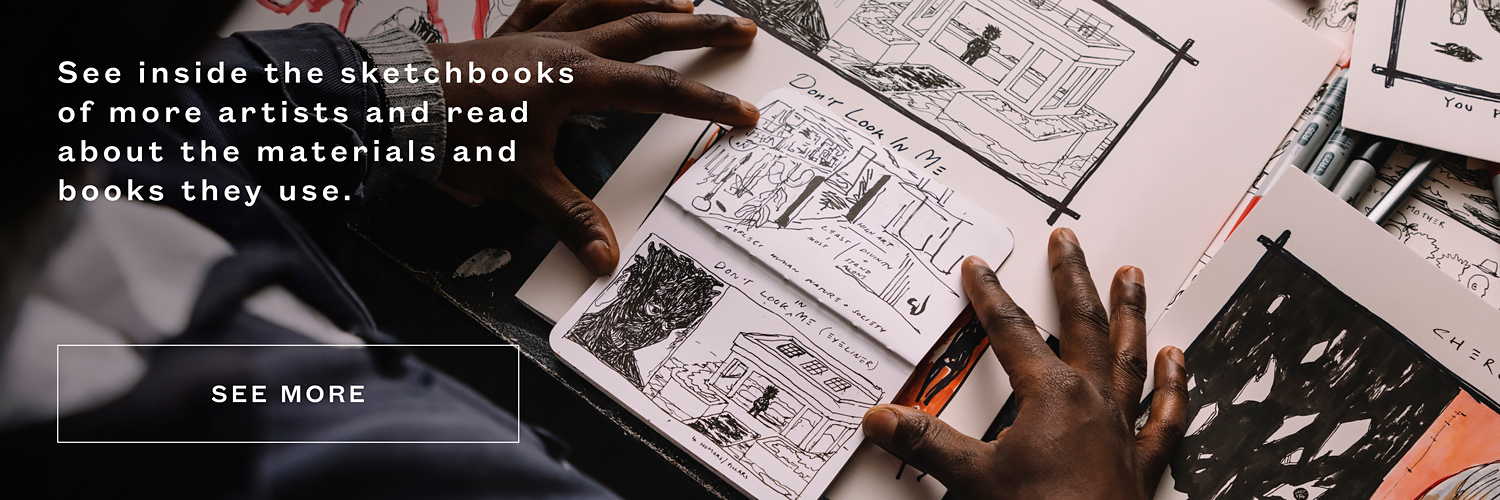
Mark Chen is a figurative painter whose use of sketchbooks underpins the full spectrum of his creative practice, from sketching on the go to the visual demonstrations he draws as a senior tutor at London Fine Art Studios. Take a look through Mark’s sketchbooks and drawing pads to find out more about the organised approach he has to his drawing practice and how he makes use of black paper.
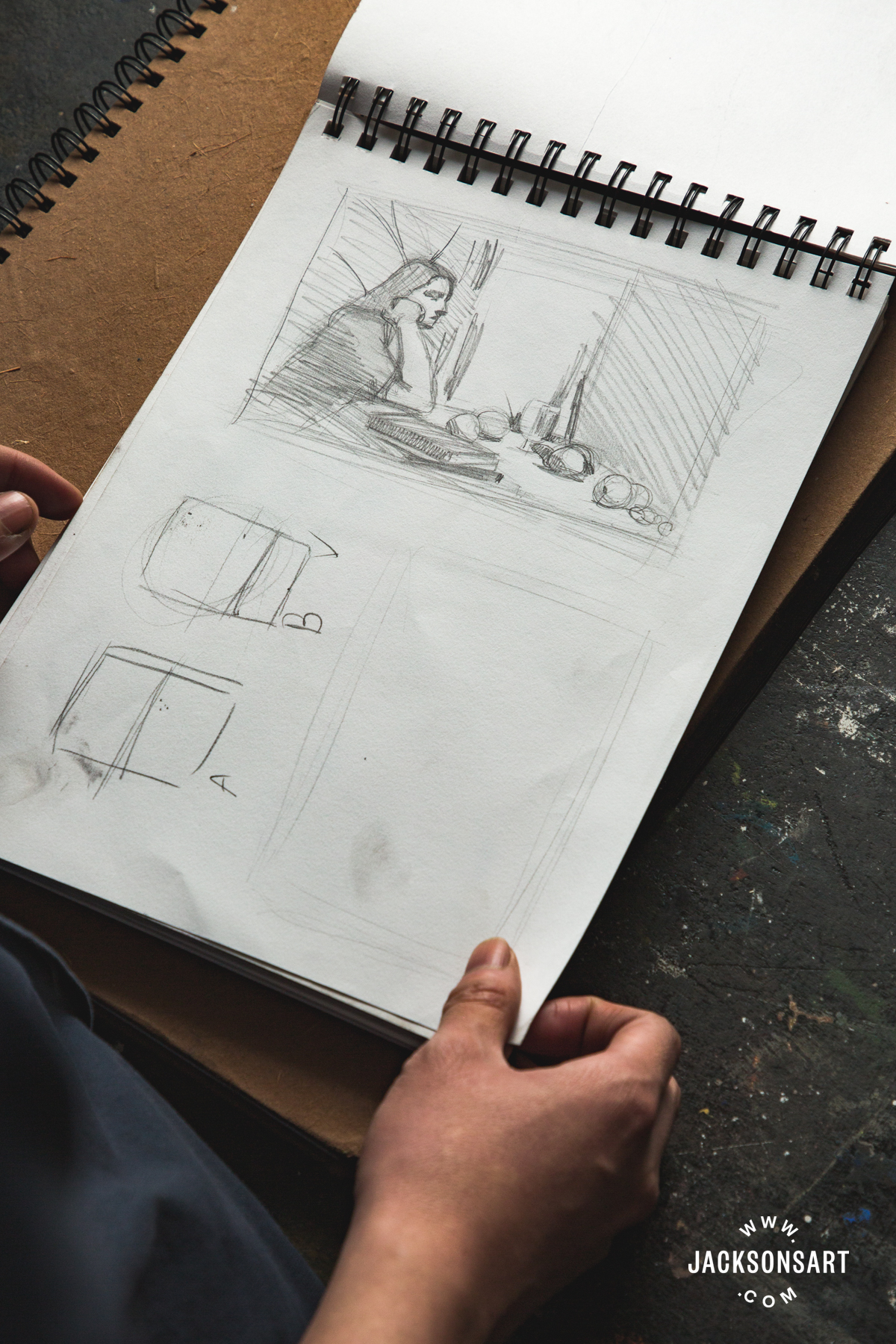
Mark Chen Takes Us Through His Sketchbook Practice
I normally keep around three sketchbooks with me; a pocket sketchbook for taking visual notes and recording ideas, a dark paper sketchbook for compositional experiments, and an A4-A3 sketchbook for museum studies and practices. I tend to work on multiple projects at the same time and some ideas might be abandoned halfway so I do not keep a separate sketchbook for each project. The layout could appear quite messy as I prefer to see how my ideas inform each other by seeing them in the same journal and look for new inspiration amidst the chaos.
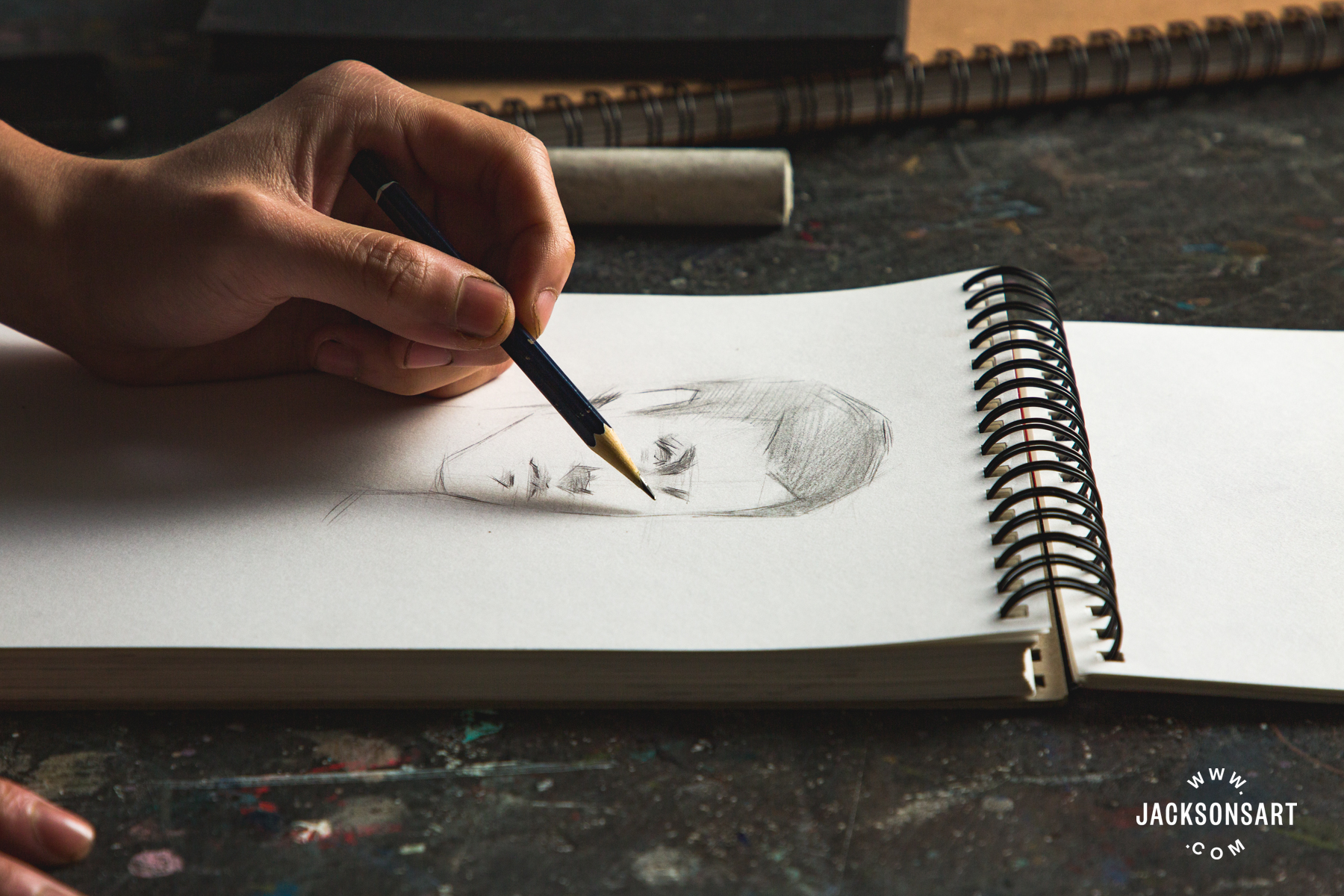
The pocket sketchbook is around A5 size which can easily fit in my pocket. This is where I write or draw ideas down for larger works, or do a 3-5 minute sketch of sceneries that intrigue me in the city. Sometimes I sketch from reflections of the windows on the bus or take visual references of an object that I might use for a final piece, such as small monuments and architectural ornaments.
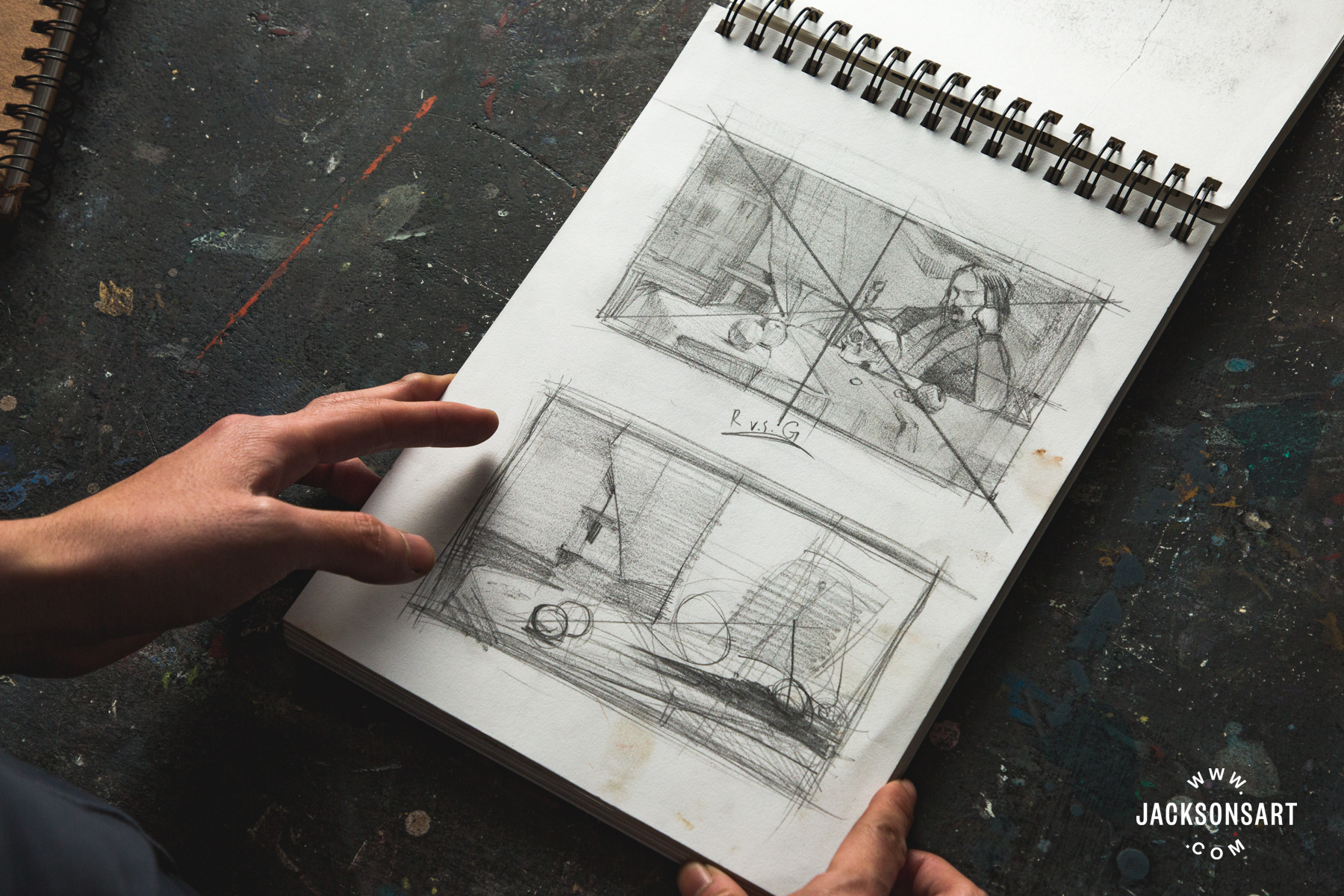
The dark sketchbook I currently have is a Daler Rowney Ebony Hardback Sketchbook and this is where I experiment and study composition. These are normally sketches for a small plein air painting or master study with reversed light and dark on black cartridge paper. While a black sketchbook is great for evening sketches of traffic lights and cityscapes, you will also find pages of thumbnail sketches drawn with white markers, pen, and white chalk, often quite abstract with simple shapes and lines. These are often compositional master studies as I source inspiration from a big range of artists such as Whistler, Kandinsky and Gely Korzhev.
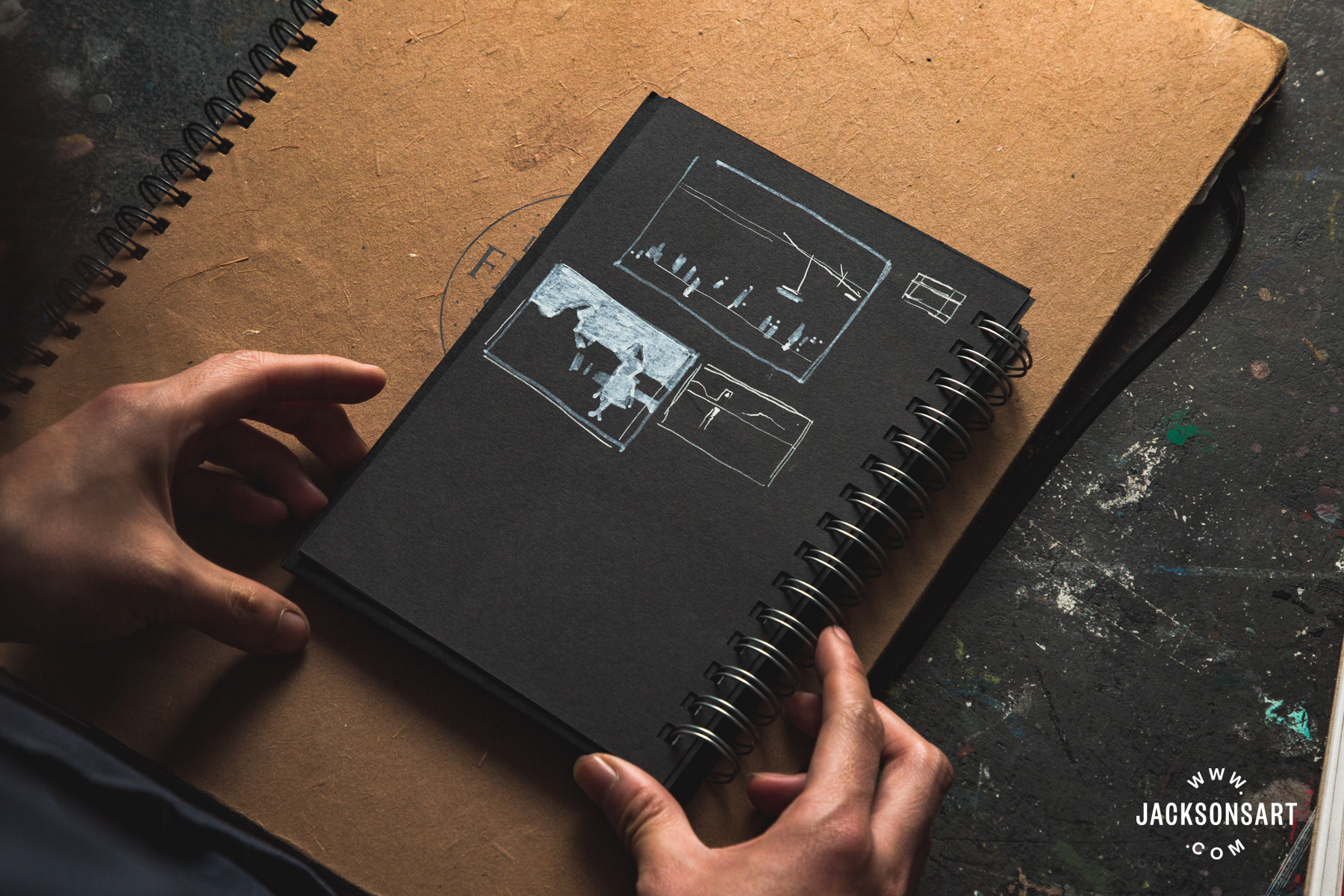
Value pattern and the arrangement of colour mass are extremely important to me and a black sketchbook is perfect for this, the dark surfaces save me so much time and effort to mass in the background. I then begin to puzzle the arrangements and develop sketches of my own, those sketches are usually the beginning of a larger piece that I have set my mind on but needed to refresh my ideas.
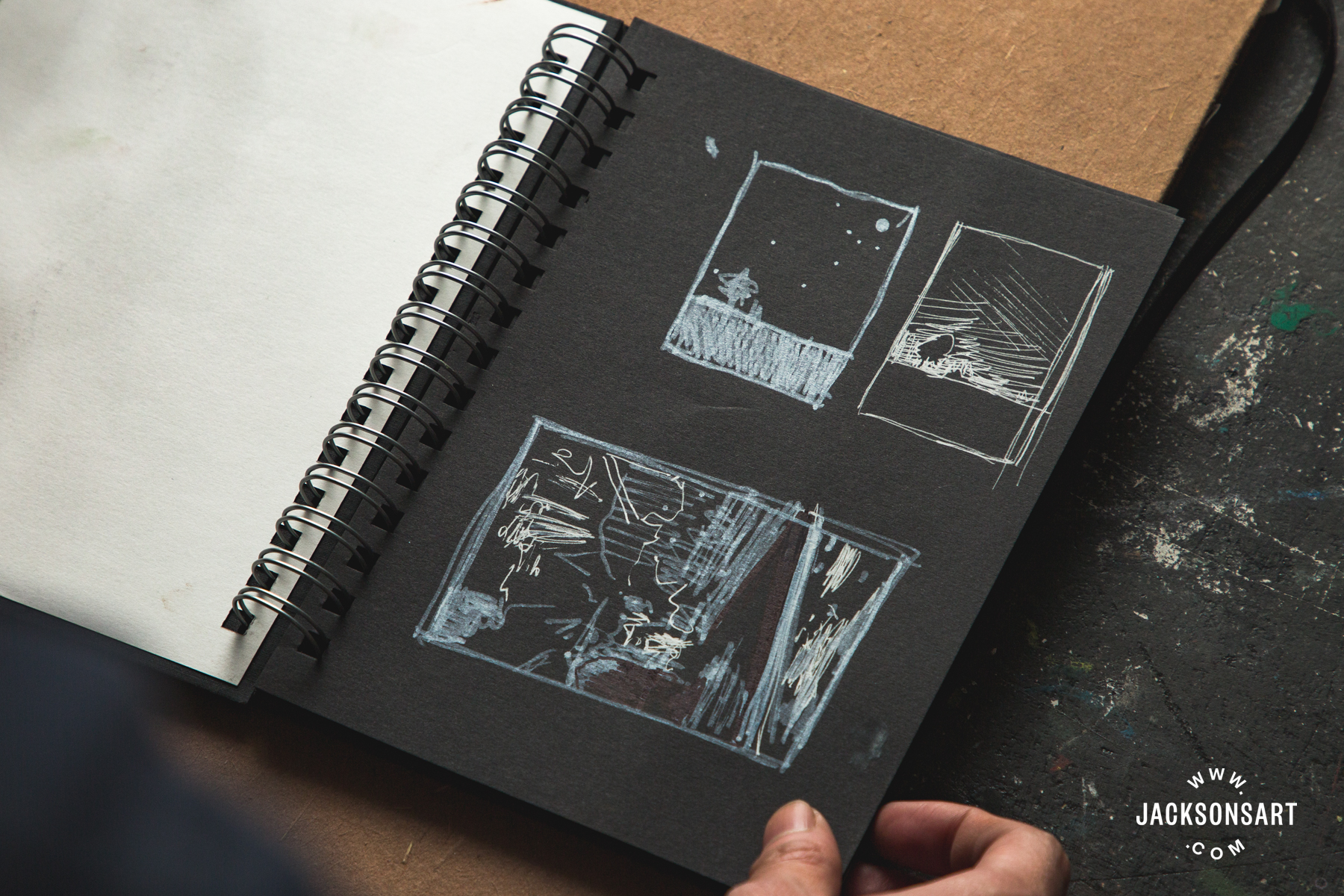
Another sketchbook I use is an A4-A3 Seawhite Cartridge Paper Sketchpad. I find the quality of the paper incredibly versatile so I have been using them for many years. The texture of the surface is smooth enough for more refined graphite studies with just enough tooth so the drawing does not smear off easily. It is also thick enough for wet mediums such as ink and water-soluble charcoal.
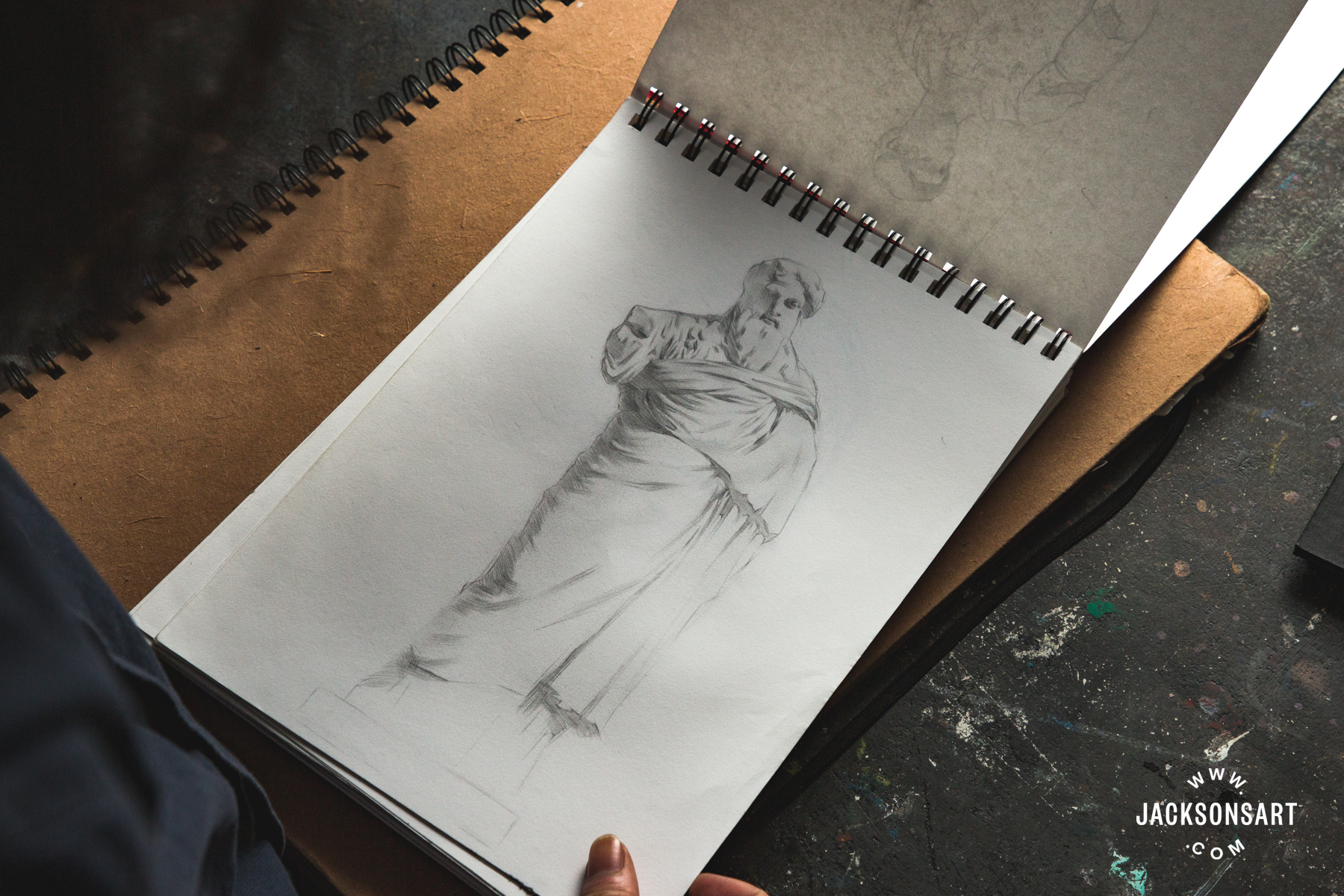
One of the exercises I do in this sketchbook is thumbnail compositional studies with black permanent markers. After a general outline of an idea in my dark sketchbook, I attempt to develop the composition here. This is usually where I start thinking about the symbolic aspect and what material I would apply instead of just abstract shapes, sometimes the drawing would be a combination of graphite and permanent marker. The only drawback with most of my sketchbook is the drawings smearing off after a while, sometimes I stick a piece of tracing paper on top of the more finished sketches to protect them. Ring-binder sketchbook saves me so much space and is incredibly convenient to carry around, but it does mean that I often have to take an extra step to protect my work.
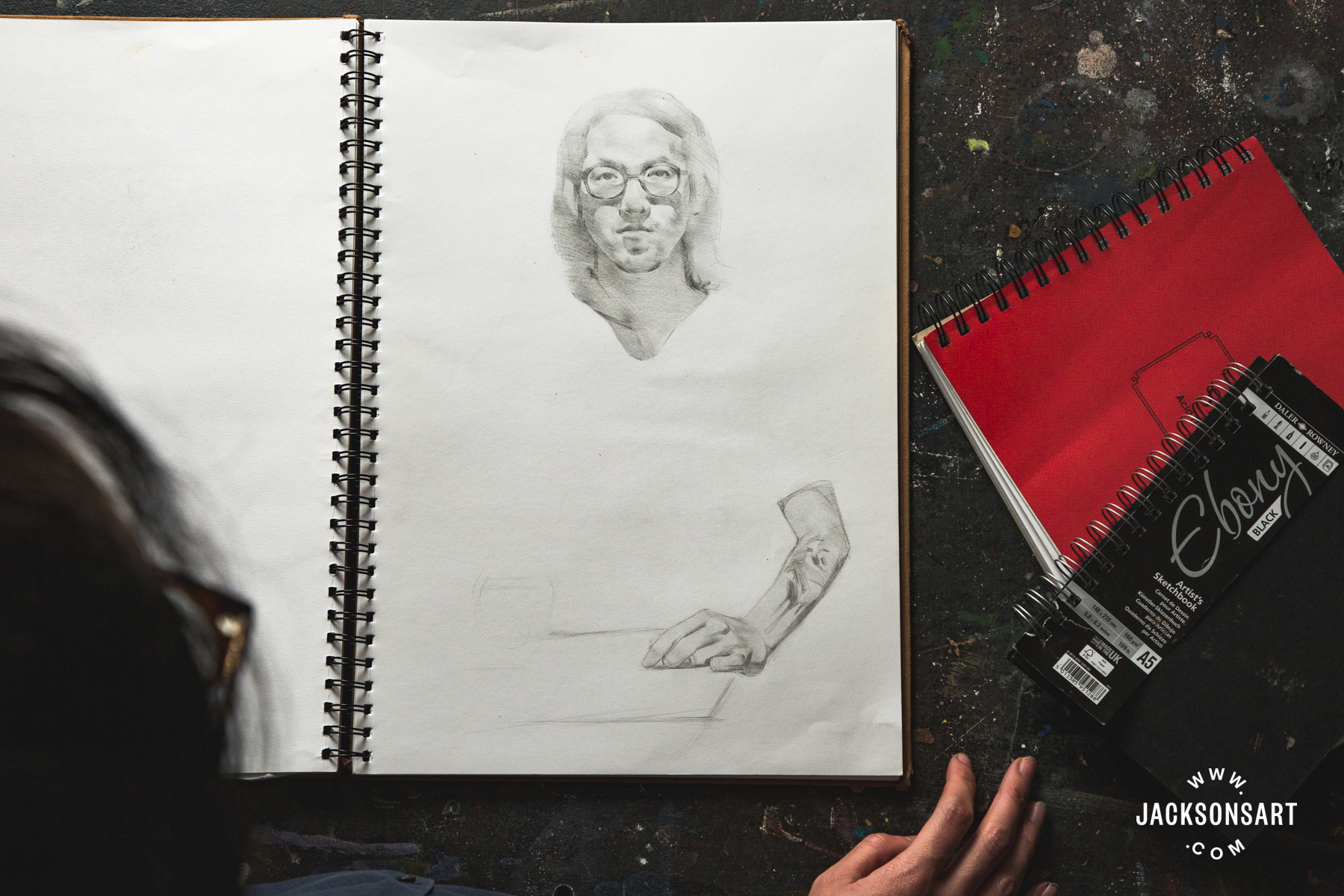
As a teaching artist, this sketchbook is generally where I keep my drawing demonstrations and anatomical studies. As I specialise in portraiture, understanding the structure of the skull is crucial. There are several pages of detailed drawings of different parts of the bone and anatomical landmarks, often followed by portrait drawings with a similar pose or angle. To further enhance this fundamental knowledge, I spend a great deal of time drawing in the Victoria & Albert Museum and the British Museum. I much prefer drawing from life instead of from memory or photographs, to sit and observe the subtlety of form and the grandeur of the antique is a major part of my practice and life as an artist. I often choose a bust of an inspiring historical figure such as Voltaire and Oliver Cromwell to draw from as it feels like a timeless visual dialect between me and the legends.
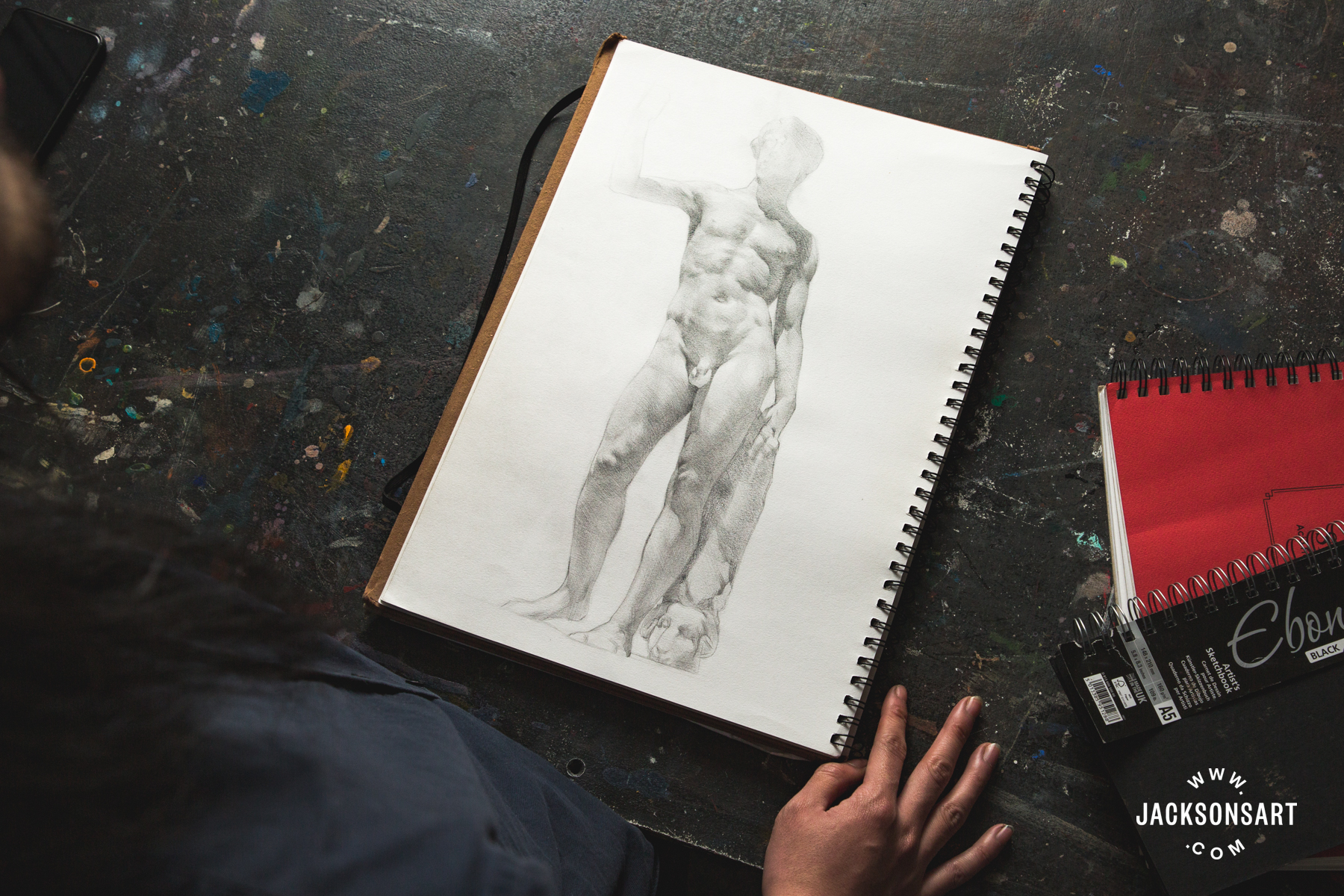
Besides the regular exercises to keep my eyes sharp, I love exploring new materials and ways to use my tools for a different texture. Cross-hatching and line works helps to describe anatomical form and foreshortening while a flat graphite stick, or a broken lead of pencils are great for a looser effect. Those mark-making experiments can often be found around the corner of the page.
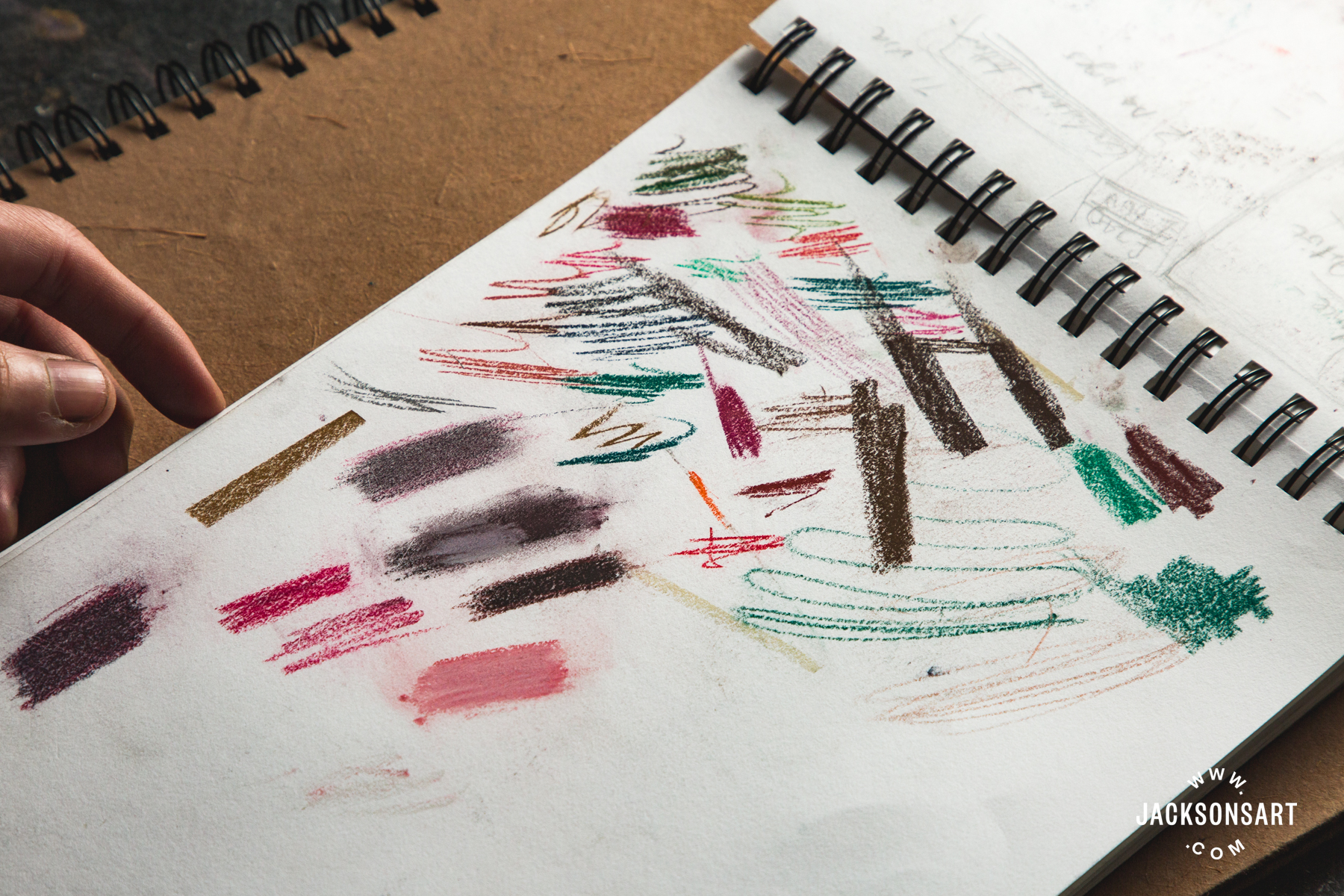
As mentioned above, I also use water-soluble charcoal, known as Russian Sauce for toning the drawing paper. Although they are quite difficult to come by in London, they are incredibly versatile as unlike ink or watercolour, they do not stain the paper permanently and can be easily rubbed off for highlights. I sometimes tone the paper after a session of drawing which does not smear the drawing at all, it was also recommended to add a drop of PVA glue if I wanted a more permanent stain.
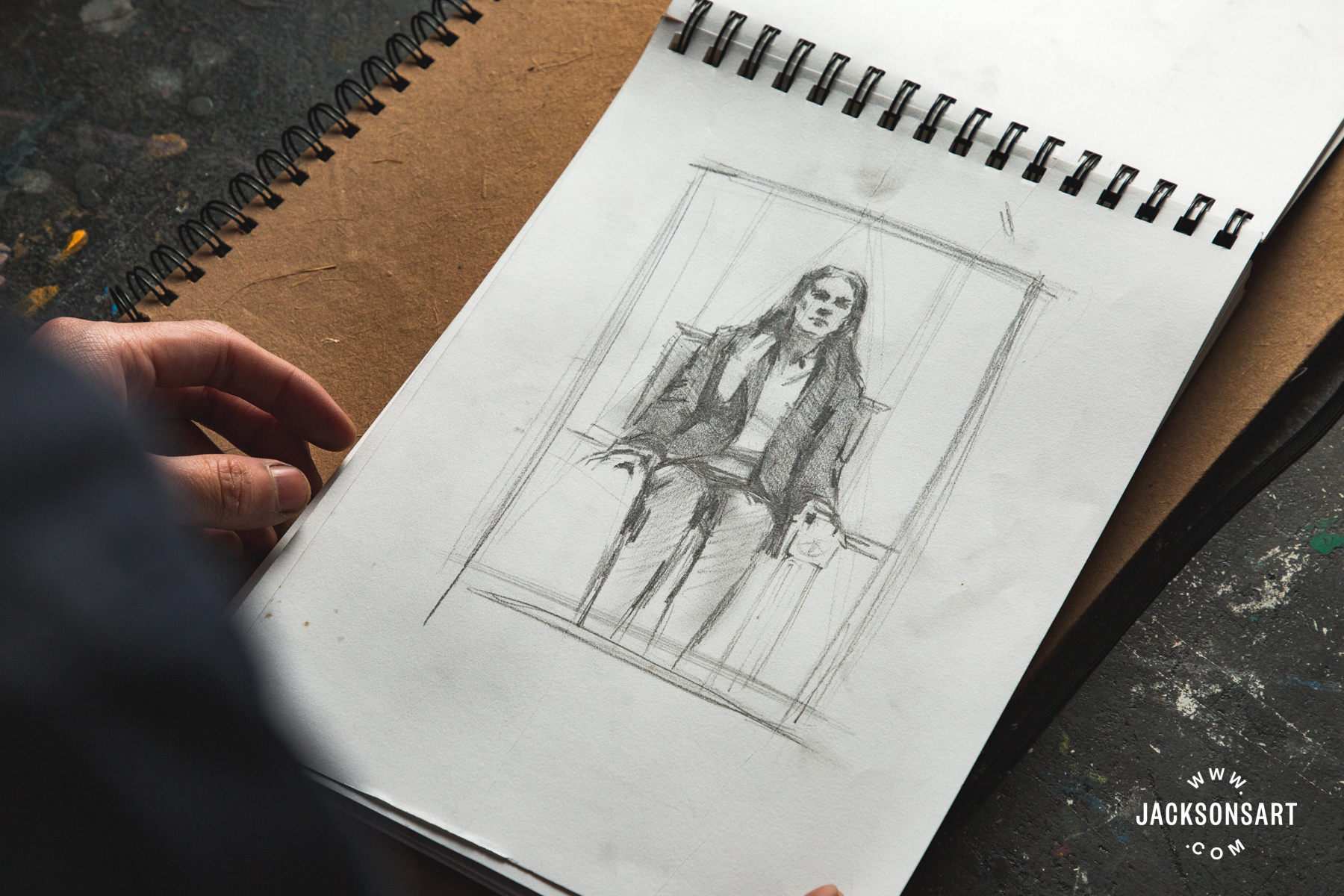
I generally use a lot of paper stumps of various sizes in my drawing, sometimes I dip my stumps into a poach of graphite or charcoal dust and liberally brush them on the paper for a more immediate and expressive background. Sponge and brushes are also great for this technique, but a stump tends to be a little cleaner and tidier.
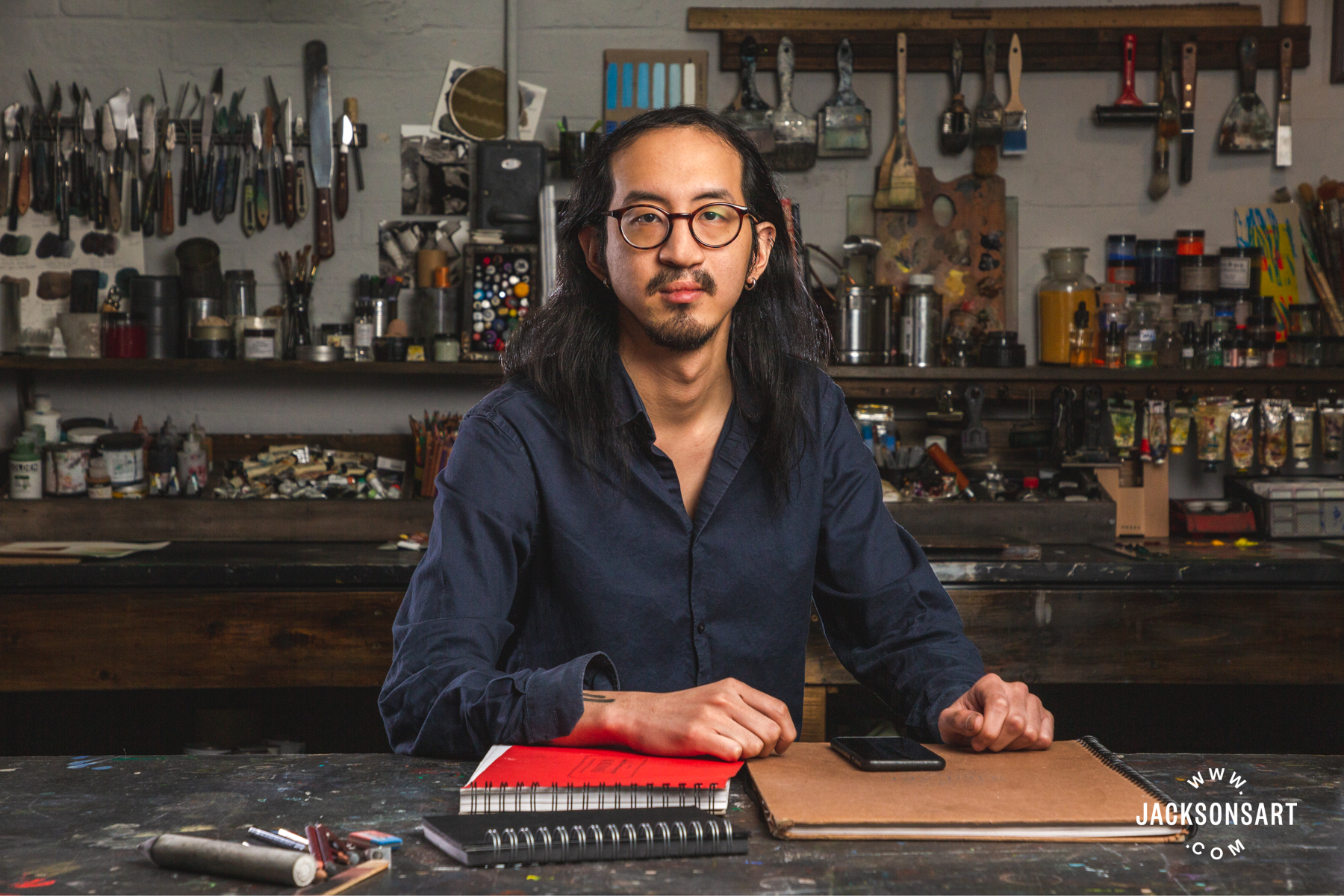
I believe the use of sketchbooks and drafts is absolutely crucial to an artist. Not to practice and sharpen our skills, but to explore, experiment, and visualise ideas. Sketching out ideas is similar to handwriting versus typing, it forces you to stretch and reshape your concept in a way that leaves a strong impression. Every artist has their unique way to navigate ideas in sketchbooks which is what makes the creative process vibrant and interesting, but the stage of planning and experimenting is key to all great works of art.
About Mark Chen
Mark Chen is a classically trained artist and teacher based in London. His practice follows a traditional, academic approach, informed by his in-depth studies of philosophy and art history as well as 17 years studying drawing and painting in both London and Taiwan. He is a senior painting/drawing tutor at London Fine Art Studios.
Further Reading
The Relationship Between the Artist and Their Materials
Black Watercolour Paper Comparison
Inside the Sketchbook of Frances Ives
Bill Murphy on Combining Materials to Reinvigorate His Drawing Practice
Shop Sketchbooks on jacksonsart.com
